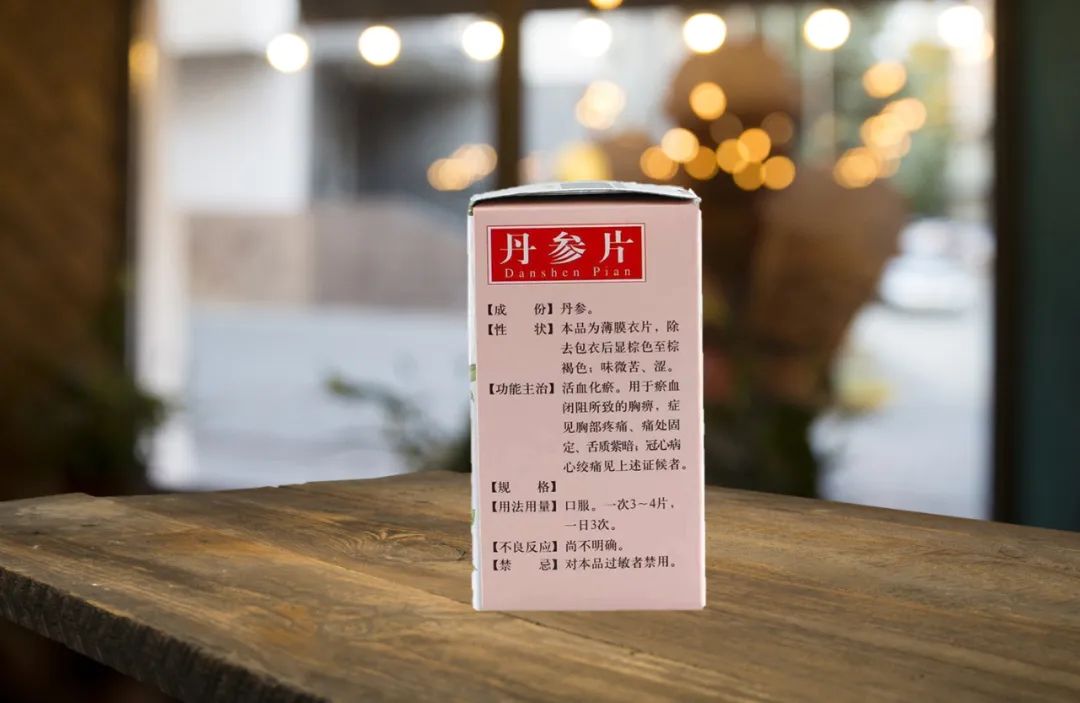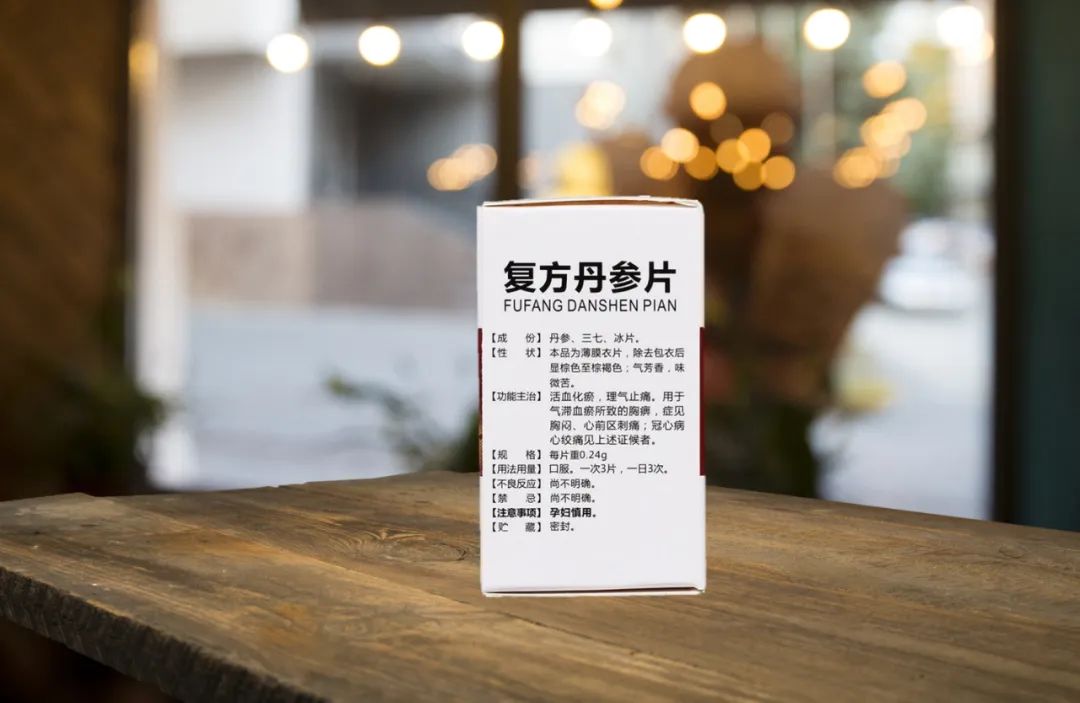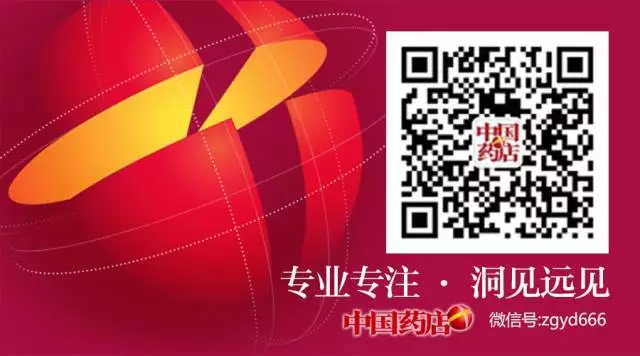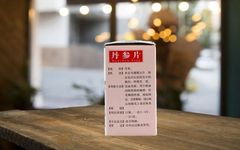Both Danshen Tablets and Compound Danshen Tablets contain Danshen (Salvia miltiorrhiza) and are used to treat coronary heart disease and angina pectoris. What are the differences between the two, and what are their respective combination therapies?
Danshen Tablets

Indications: Invigorates blood and resolves stasis, used for chest obstruction due to blood stasis, characterized by chest pain, fixed pain location, and dark purple tongue; indicated for coronary heart disease with angina pectoris presenting with the above symptoms.
Prescription Interpretation: The main ingredient is Danshen, which is bitter and slightly cold, affecting the Heart and Liver meridians. It invigorates blood, resolves stasis, cools the blood, calms the spirit, and has effects of relieving pain, promoting blood circulation, and clearing the heart to relieve irritability. It is used for stabbing pain in the chest and abdomen, hot bi pain, sore and swollen ulcers, irritability and insomnia, and angina pectoris.
Pharmacist Experience Sharing: This product has effects of vasodilation, lowering blood pressure, increasing coronary blood flow, lowering blood lipids, anti-atherosclerosis, anti-coagulation, and anti-thrombosis.
Sales Reminder: Use with caution in pregnant women and those with allergic constitutions. Avoid raw, cold, spicy, and greasy foods.
Combination Therapy – Danshen Tablets + Roxithromycin Sustained-Release Tablets
Interpretation: Roxithromycin sustained-release tablets are a new generation of macrolide antibiotics, mainly effective against Gram-positive bacteria, anaerobes, chlamydia, and mycoplasma. Its in vitro antibacterial effect is similar to erythromycin, but its in vivo antibacterial effect is 1-4 times stronger. The combination of Roxithromycin sustained-release tablets and Danshen Tablets for treating seminal vesiculitis can effectively relieve symptoms, is safe and reliable, and has definite effects.
Compound Danshen Tablets

Indications: Invigorates blood and resolves stasis, regulates qi and relieves pain. It is indicated for chest obstruction due to qi stagnation and blood stasis, characterized by chest tightness and stabbing pain in the precordial area; indicated for coronary heart disease with angina pectoris presenting with the above symptoms.
Prescription Interpretation: The main drug is Danshen, which resolves stasis and relieves pain, invigorates blood and nourishes blood, clears the heart and relieves irritability. It is supplemented with Sanqi (Panax notoginseng) to invigorate blood and open the meridians, and Bingpian (Borneol) to aromatically open the orifices and regulate qi to relieve pain. The combination of these herbs works together to invigorate blood, resolve stasis, aromatically open the orifices, and regulate qi to relieve pain.
Pharmacist Experience Sharing: This product mainly has effects of anti-myocardial ischemia and hypoxia, dilating coronary arteries, lowering blood pressure, slowing heart rate, and lowering blood lipids. Clinically used for coronary heart disease angina pectoris, myocardial infarction, hypertension, hyperlipidemia, arrhythmia, pulmonary heart disease, and dementia associated with qi stagnation and blood stasis.
Sales Reminder: Use with caution in those with liver and kidney dysfunction, pregnant women, and those with allergic constitutions.
Combination Therapy
01 Compound Danshen Tablets combined with Tianma Capsules
Interpretation: Tianma Capsules calm the liver and extinguish wind, used for dizziness, headaches, and limb numbness caused by liver wind disturbance. The combination of Compound Danshen Tablets and Tianma Capsules for treating migraines is effective and has advantages of simplicity, convenience, and low cost, making it worthy of clinical application and promotion.
02 Compound Danshen Tablets + Simvastatin Tablets
Interpretation: Simvastatin tablets are a statin class lipid-lowering medication that inhibits cholesterol synthesis enzymes, effectively lowering cholesterol, low-density lipoprotein, and triglycerides, while also raising high-density lipoprotein to some extent. The combination of Compound Danshen Tablets and Simvastatin Tablets for treating coronary heart disease shows good clinical efficacy, improving cardiac function and reducing serum inflammatory factors and lipid levels, making it valuable for clinical promotion.
03 Compound Danshen Tablets + Magnesium Sulfate
Interpretation: Magnesium sulfate is used for seizures, eclampsia, uremia, tetanus, hypertensive encephalopathy, and acute renal hypertensive crises. For patients with preeclampsia, the combination of Compound Danshen Tablets and magnesium sulfate can successfully reduce the 24-hour urinary protein level and shorten the time required for symptom resolution, showing significantly better clinical effects than traditional magnesium sulfate alone.
04 Compound Danshen Tablets + Flunarizine Hydrochloride Capsules
Interpretation: Flunarizine hydrochloride capsules are a medication for treating migraines. When used in combination with Compound Danshen Tablets, the two drugs have a synergistic effect, improving the treatment of migraines with high safety, making it worthy of promotion.
05 Compound Danshen Tablets + Valsartan Capsules
Interpretation: Valsartan is an angiotensin II receptor antagonist used for primary hypertension. The combination of Compound Danshen Tablets and Valsartan capsules for treating diabetic cardiomyopathy shows ideal effects and is worthy of promotion.
06 Compound Danshen Tablets + Ceftazidime
Interpretation: Ceftazidime is a semi-synthetic third-generation cephalosporin with an antibacterial mechanism that affects bacterial cell wall synthesis. It is highly stable against broad-spectrum β-lactamases produced by Gram-negative bacteria; its antibacterial effect against Gram-negative bacteria is significantly stronger than that of first and second-generation cephalosporins, but its effect against Gram-positive cocci is not as strong as that of first-generation and some second-generation cephalosporins. In the treatment of epididymitis, the combination of Ceftazidime and Compound Danshen Tablets shows better results than using Ceftazidime alone.
Summary:
The main ingredient of Danshen Tablets is Danshen, while Compound Danshen Tablets contain Danshen, Sanqi, and Bingpian. The primary function of Danshen is to invigorate blood and resolve stasis, clear the heart and relieve irritability, and it can be used for coronary heart disease, angina pectoris, and anxiety. Danshen Tablets mainly have the effect of invigorating blood and resolving stasis. In addition to invigorating blood and resolving stasis, Compound Danshen Tablets also have the effect of regulating qi and relieving pain, mainly used for the treatment of coronary heart disease and angina pectoris.

This article is an original/compiled work by Chinese Pharmacies.
Reproduction without permission is prohibited.

Long press the image for 3 seconds to scan the QR code to follow
Dear, the Chinese Pharmacies public account is continuously collecting articles. If you wish to express your thoughts, record your life, or share experiences… you can send your works in text or image form to [email protected] (email), compensation=200 yuan + reading volume * 0.01 yuan. Please indicate your contact information when submitting.
Let others know you are “watching” ↘

